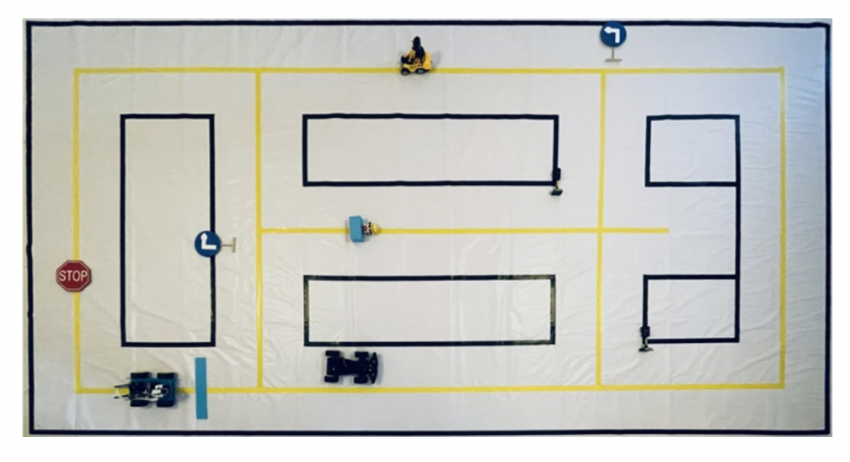A Study on Safety Driving of Intelligent Vehicles Based on Attention Mechanisms
Main Article Content
Abstract
Intelligent vehicles attempt to improve the daily transportation of people, but their safety has been questioned after numerous trafic accidents. This paper proposes a Safety Driving Framework (SDF) to improve the ability of intelligent vehicles to avoid risks during emergencies. When performing autonomous driving tasks, the SDF interacts with the environment using a camera, makes decisions using convolutional neural networks, and can perform an emergency stop if it encounters an obstacle. In this paper, we examine the potential of attention mechanisms to enhance the performance of convolutional neural networks and construct four convolutional neural networks with attention mechanisms to use in experiments. Additionally, we extend a dataset and enhance the robustness of the model by implementing data augmentation (DA) techniques. We train the model using 10-fold cross-validation. In this article, we build an intelligent driving platform and a simulation track for simulation testing. The experimental results show that CNNs using data reinforcement and with an attention mechanism perform better than existing models. In particular, ENetb0-SE has an average recognition rate of 95.6% for obstacles and an accident rate of 2%, which is much better than existing models.
Article Details

This work is licensed under a Creative Commons Attribution-NonCommercial-NoDerivatives 4.0 International License.
References
D. Pomerleau and T. Jochem, “Rapidly adapting machine vision for automated vehicle steering,” IEEE expert, Vol. 11, No.2, pp.19-27, 1996.
B. Schoettle and M. Sivak, “A preliminary analysis of real-world crashes involving self-driving vehicles,” University of Michigan Transportation Research Institute, 2015.
C. Nanding and C. Jing, “Design of intelligent tracing car based on infrared sensor,” IOP Conference Series: Materials Science and Engineering, pp. 2019.
J. H. Rhee and J. J. S. Seo, “Low-cost curb detection and localization system using multiple ultrasonic sensors,” Sensors, Vol. 19, No.6, p.1839, 2019.
A. Ranjbar and S. Vig, “A Prototype on Design and Development of Self-Driving Vehicle,” IRJET Journal, Vol. 8, No.6, pp.20-25, 2021.
S. Yuenyong and Q. Jian, “Generating Synthetic Training Images for Deep Reinforcement Learning of a Mobile Robot,” Journal of Intelligent Informatics and Smart Technology, Vol. 2, pp.16-20, 2017.
R. R. O. Al-Nima, T. Han and T. Chen, “Road Tracking Using Deep Reinforcement Learning for Self-driving Car Applications,” International Conference on Computer Recognition Systems, 2019.
X. Zong, G. Xu, G. Yu, H. Su and C. Hu, “Obstacle Avoidance for Self-Driving Vehicle with Reinforcement Learning,” SAE International Journal of Passenger Cars - Electronic and Electrical Systems, Vol. 11, No.1, 2018.
R. Chopra and S. S. Ro, “End-to-End Reinforcement Learning for Self-driving Car,” Advanced Computing and Intelligent Engineering, pp. 23-61, 2020.
J. Hu, L. Shen and G. Sun, “Squeeze-and-Excitation Networks,” 2018 IEEE/CVF Conference on Computer Vision and Pattern Recognition (CVPR), pp. 7132-7141, 2018.
S. Woo, J. Park, J. Y. Lee and I. S. Kweon, “CBAM: Convolutional block attention module,” European conference on computer vision (ECCV), pp. 3-19, 2018.
S. Ding and J. Qu, “Smart car with road tracking and obstacle avoidance based on Resnet18-CBAM,” 2022 7th International Conference on Business and Industrial Research (ICBIR2022), pp.582-585, 2022.
Y. Li and J. Qu, “Intelligent road tracking and real-time acceleration-deceleration for autonomous driving using modified convolutional neural networks,” CURRENT APPLIED SCIENCE AND TECHNOLOGY, Vol. 22, No.6, 2022.
M. Tan and Q. Le, “Efficientnet: Rethinking model scaling for convolutional neural networks,” Proceedings of the 36th International Conference on Machine Learning, pp. 6105-14, 2019.
K. He, X. Zhang, S. Ren and J. Sun, “Deep Residual Learning for Image Recognition,” 2016 IEEE Conference on Computer Vision and Pattern Recognition (CVPR), pp. 770-778, 2016.
C. Shorten, T. M. Khoshgoftaar, “A survey on image data augmentation for deep learning,” Journal of big data, Vol. 6, No.1, pp.1-48, 2019.
T. Fushiki, “Estimation of prediction error by using K-fold cross-validation,” Statistics and Computing, Vol. 21, No.2, pp.137-146, 2011.
A. Girma, S. Amsalu, A. Workineh, M. Khan, and A. Homaifar, “Deep learning with attention mechanism for predicting driver intention at intersection,” in 2020 IEEE Intelligent Vehicles Symposium (IV), pp. 1183-1188, 2020.


